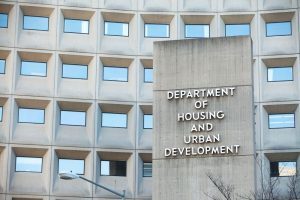 The U.S. Department of Housing and Urban Development (HUD) recently announced that is seeking public input on how the Department can use its existing authorities to maximize the beneficial impact of Opportunity Zones for residents and their communities. The Request for Information (RFI) is a call for the public to share existing knowledge and provide recommendations to HUD regarding the use of public and private investments in urban and economically distressed communities, including qualified Opportunity Zones.
The U.S. Department of Housing and Urban Development (HUD) recently announced that is seeking public input on how the Department can use its existing authorities to maximize the beneficial impact of Opportunity Zones for residents and their communities. The Request for Information (RFI) is a call for the public to share existing knowledge and provide recommendations to HUD regarding the use of public and private investments in urban and economically distressed communities, including qualified Opportunity Zones.
“Opportunity Zones present tremendous promise for America’s distressed communities,” said HUD Secretary Ben Carson. “Through this request, we are looking to better understand how HUD can better tailor its policies and help Opportunity Zones create more positive economic outcomes for the millions of Americans that live in these areas, and for our country as a whole.”
After being designated as “opportunity zones,” low-income and high-poverty areas have seen a surge in sale prices. Investors, keen to receive a discount on capital gains taxes for investing within these areas, flock to these opportunity zones, according to an analysis by Zillow.
According to Zillow, sale prices in all eligible areas "grew faster than prices in places that weren't, but after opportunity zones were selected, price-growth trends diverged among eligible tracts."
In HUD’s RFI, the Department is seeking advice on how it should use its existing authorities to maximize the beneficial impact of public and private investments in urban and economically distressed communities, whether it should create an information portal and what information it should include, what types of technical assistance should be offered through HUD, how HUD can properly evaluate the impact of Opportunity Zones on communities, and more.
“Opportunity Zones are a powerful vehicle for bringing economic growth and job creation to the American communities that need it the most,” HUD states. “On average, the median family income in an Opportunity Zone is 37 percent below the state median. Overall, more than 8,700 communities in all 50 States, Washington D.C., and five U.S. Territories have been designated as Opportunity Zones. Nearly 35 million Americans live in communities designated as Opportunity Zones.”

 theMReport.com Your trusted source for mortgage banking news
theMReport.com Your trusted source for mortgage banking news









